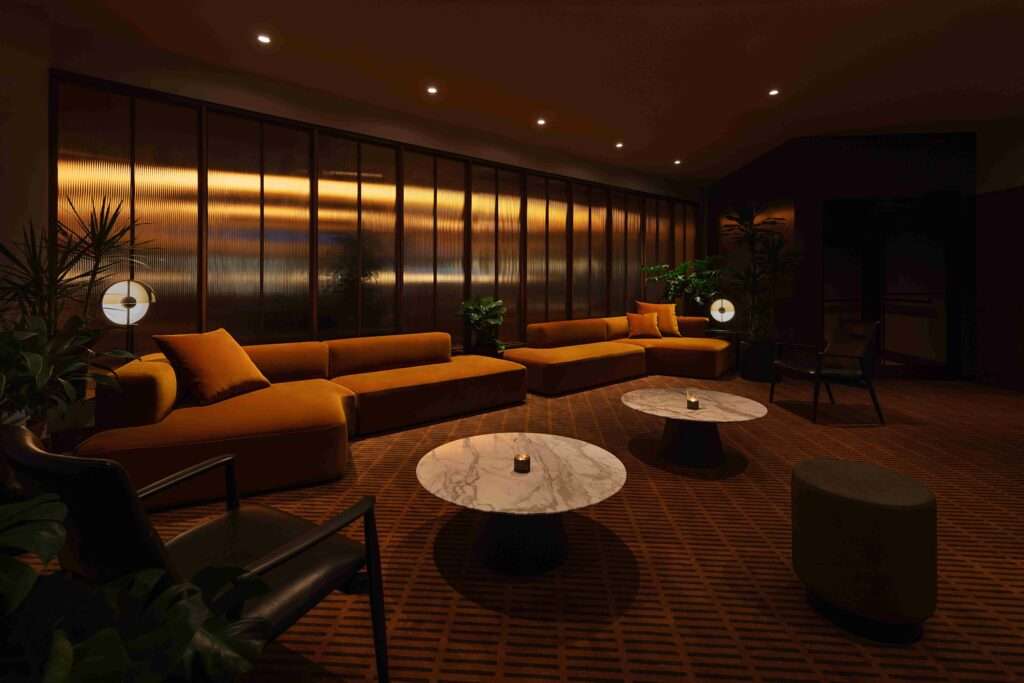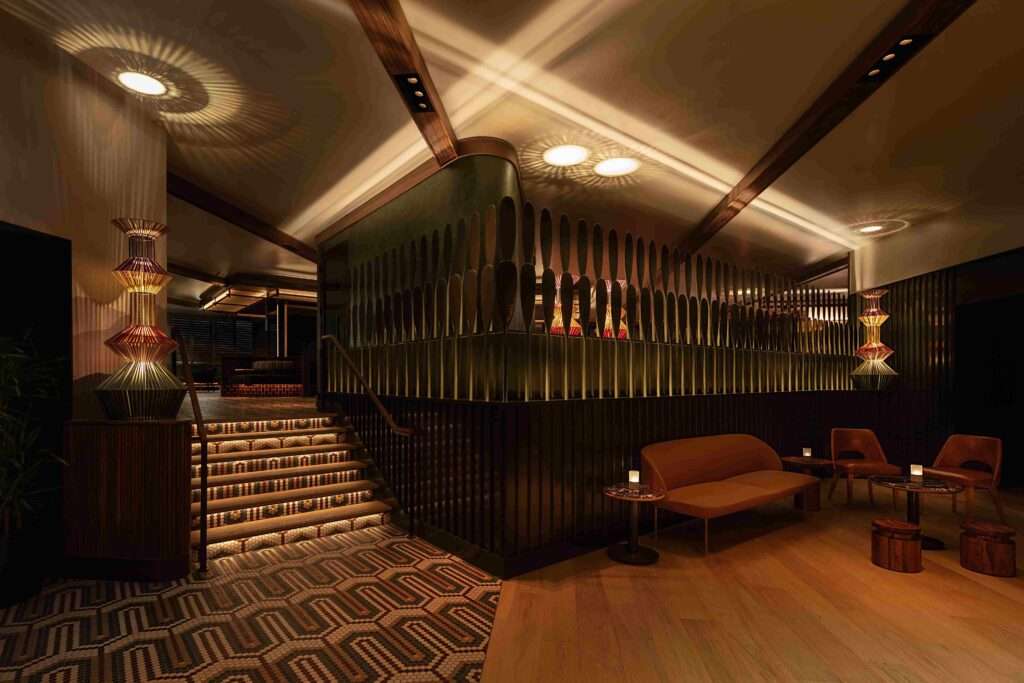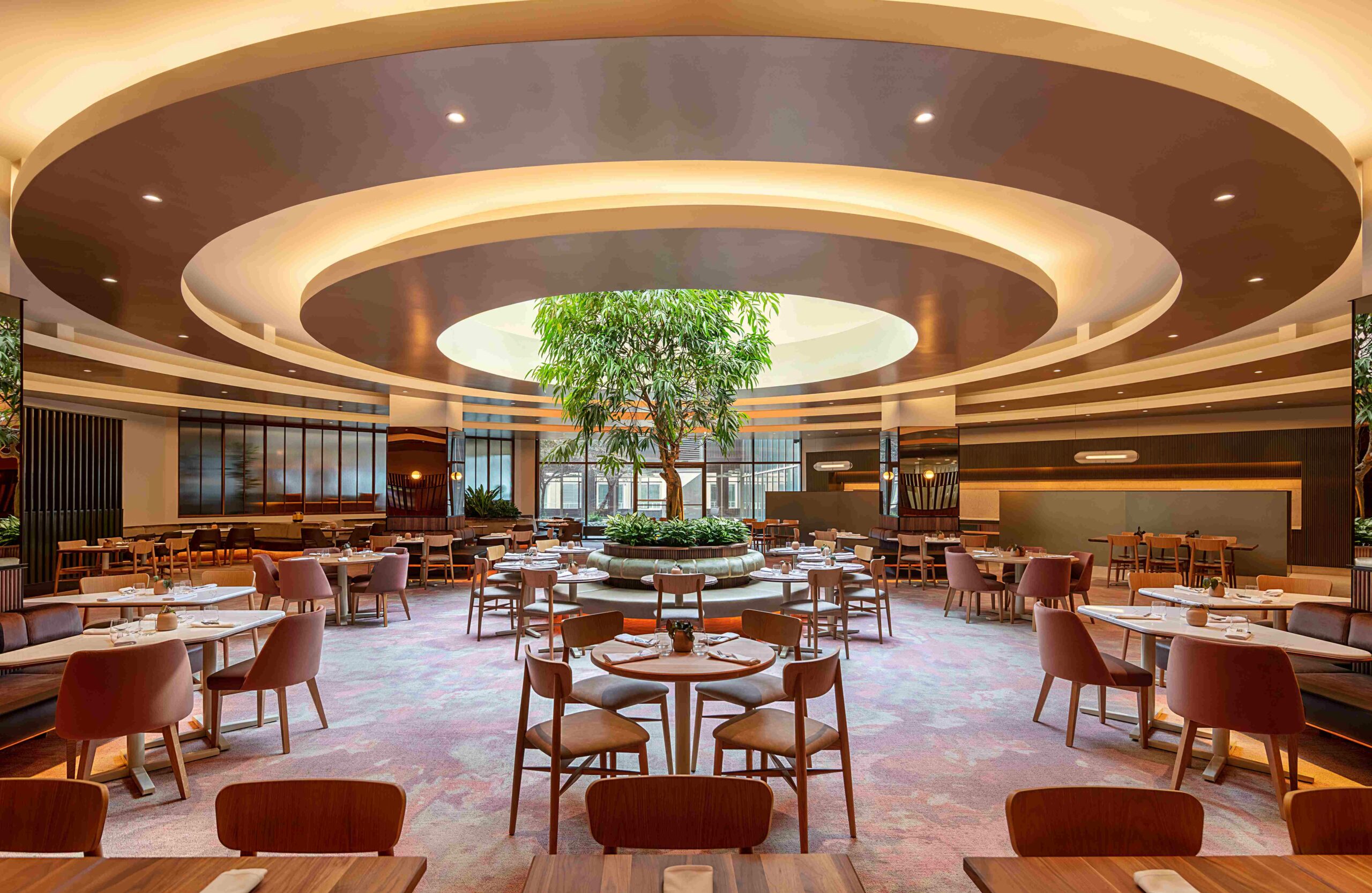Header: Jean-Sébastien Senécal
Atelier Zébulon Perron, renowned for its distinct interior design services for the commercial sector, has introduced a 10,000-square-foot construction project for the Hilton Doubletree Hotel. Located in Complexe Desjardins, a mixed-use office, hotel, and shopping complex in downtown Montreal’s thriving Quartier des Spectacles, the project mandate consists of multiple elements, including the conversion of an existing breakfast space into a multi-functional room, the creation of a new VIP lounge area for preferred guests, and the design and construction of a brand-new bar, restaurant, and dining room.
“In designing hospitality spaces, our focus always begins with creating atmosphere and facilitating social interaction, or what we refer to as the ‘social ergonomics’. Space layout is the key to a successful project, and we have designed a connected environment for this project that is conducive to gathering, mingling, and circulating.”
Zébulon Perron, Founder and Lead Designer of Atelier Zébulon Perron
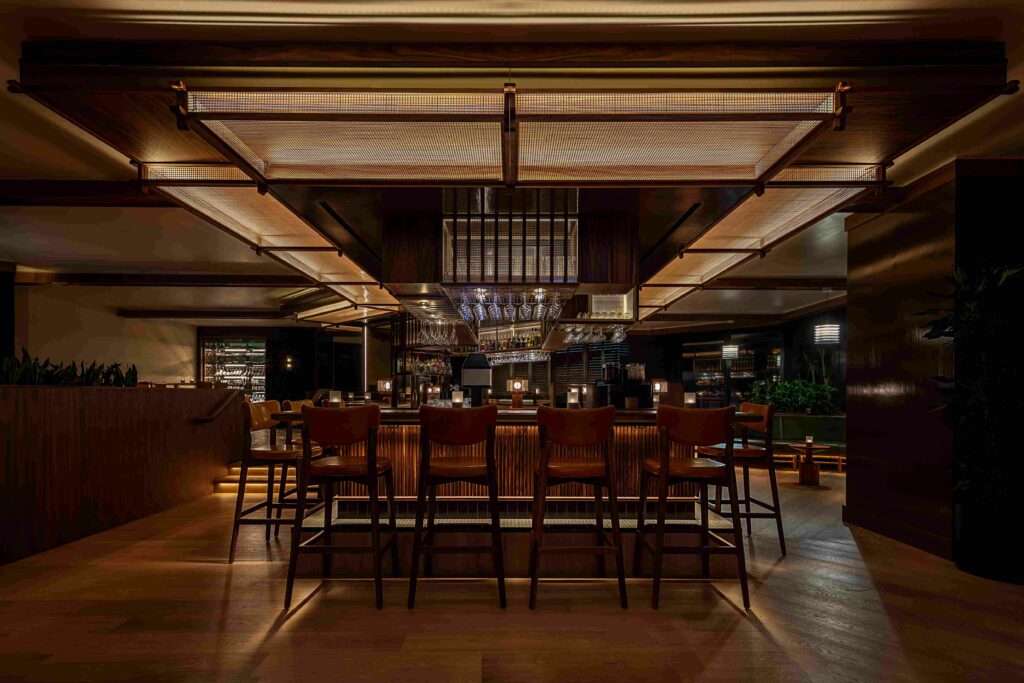
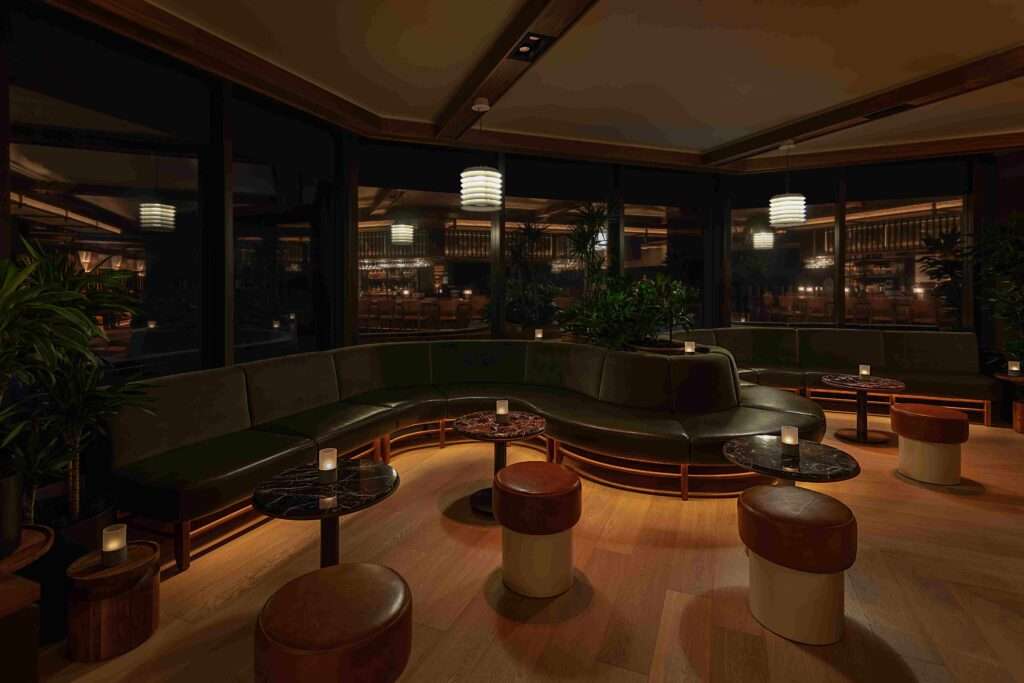
Setting the anchor
The core of the project is an expansive breakfast area, which serves as guests’ first foray outside of their hotel rooms. The firm focused on creating a luminous and multi-functional space that would extend beyond the purposes of a breakfast buffet and serve as a breakout space for the hotel’s adjoining meeting rooms. Soft colors, high-quality walnut, white oak, marbles, velvets, and dichroic steel infuse a sense of lightness and conviviality into clean design gestures that accommodate movement and the functional aspects of the space.
“Right from the planning stage, those elements are important in terms of creating the ambiance of a space,” explains Perron. “It’s essential to create a sense of comfort and intimacy that brings it all together on a human scale.”
In approaching that endeavor and upon inspecting the premises, the architects discovered an existing skylight above the space that had long been sealed. They reopened the ceiling to expose the skylight, thereby infusing natural light into the space. The skylight became the central component of the entire project, and the firm went to great lengths to source and plant a large tree directly into the space itself. A crane was required to insert the tree through the skylight, and the successful endeavor created an axis in the breakfast space around which everything else in the project would be articulated. Concentric rings on the ceiling emanate from the central opening like water ripples, and custom-designed lighting fixtures and hanging plants further contribute to a bright and contemporary ambiance.

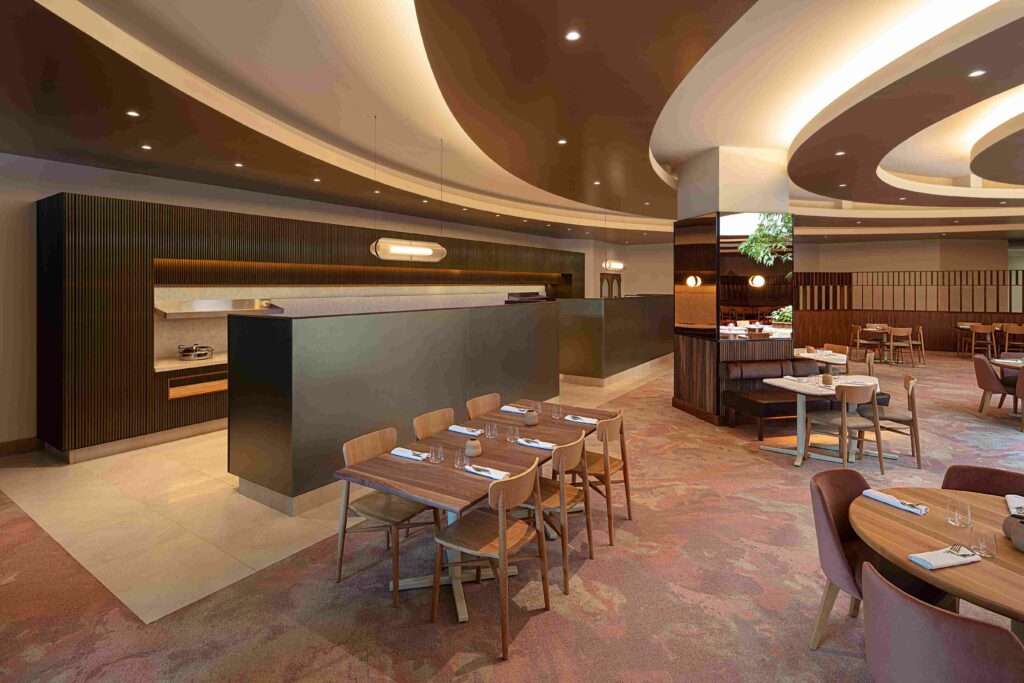
Redefined purpose
To facilitate transitions of the space from a breakfast area by morning to other functions throughout the day, the firm positioned the breakfast service area between two monoliths, essentially removing it as a visual element of the main room. Adjacent to the main space, a new VIP room was created to provide comfort and light F&B services to the hotel’s preferred guest program members, which is articulated by a glazed glass partition that maintains the permeation of natural light yet assures the privacy of the room. The firm also leveraged the natural elements offered by an adjoining outdoor terrace to draw additional light into the room and to create a sense of transition between the landscaping of the terrace and the hanging plants and anchoring tree of the breakfast area.
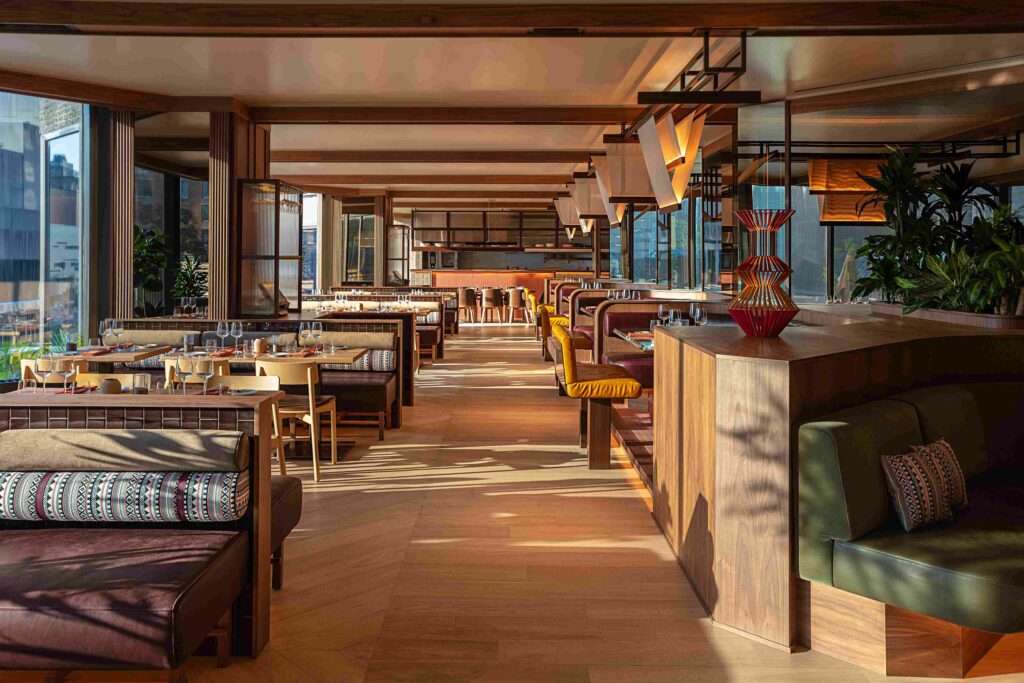
Contemporary Canadiana
Transitioning to the restaurant, Bivouac offers a contemporary Quebecoise culinary experience featuring a terroir-themed menu and locally produced cheeses and wines. The client was set on creating a concept for the bar and restaurant area evocative of “glamping” or glamorous camping, defined by references to Canadian wilderness landscapes and activities. Rather than taking a literal heritage approach to the idea, Atelier Zébulon Perron endeavored to assuage the Canadiana theme within the contemporary context of a large downtown hotel.
“While infusing subtle references to the glamping and Canadiana themes, we focused on developing sophisticated and contemporary spaces,” says Perron. “We came up with a variety of solutions that address the full spectrum of those circumstances.“
In translating the concept to the setting of a new restaurant and dining room, one of the first elements introduced was an abundance of neatly arranged, upward-facing canoe paddles aligned to frame the external perimeters of the space and to serve as a gateway between the breakfast area and the new restaurant. The theme is further conveyed throughout the space through various design elements that include an intricate mosaic tile pattern surrounding the bar, backrests upholstered and cinched with leather straps that are reminiscent of harnessed picnic blankets, and totem-shaped light fixtures emitting lantern-like glows from beneath canvas shades, offering a subtle nod to tent material.
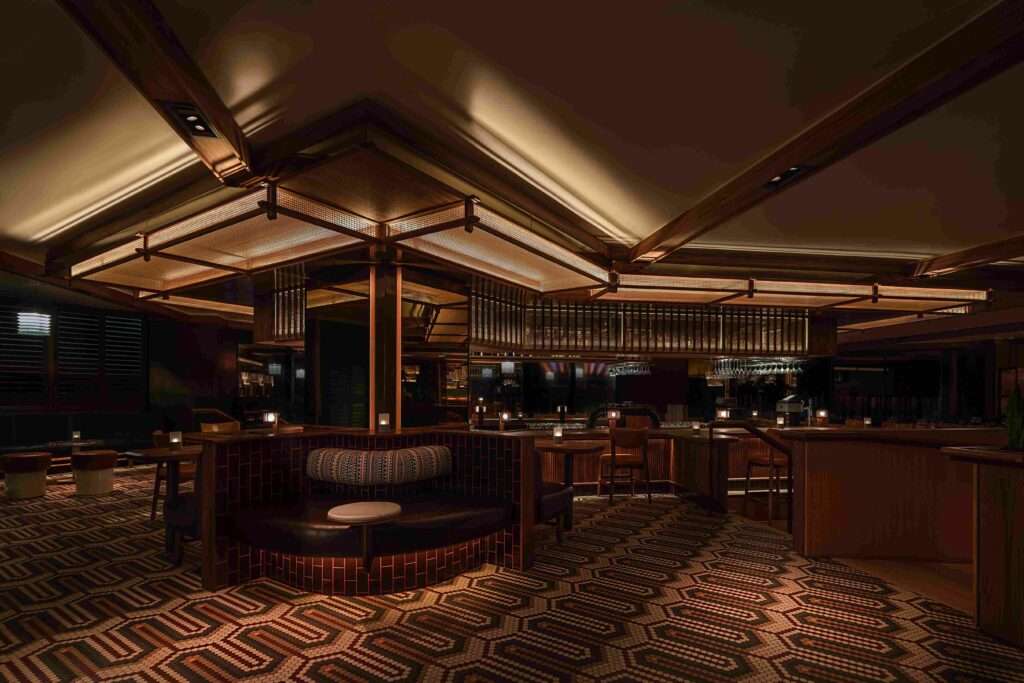
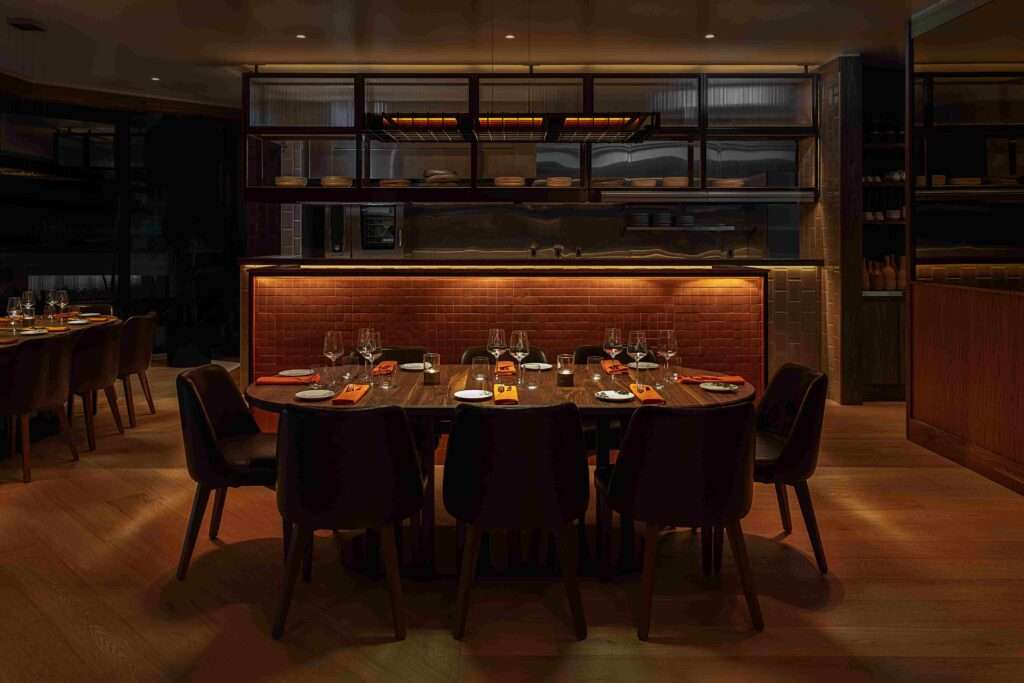
Convivial connectivity
Located on the 4th floor, the area can be accessed from either the reception area of the hotel lobby or via the adjacent meeting rooms, with direct access to the bar and restaurant on one side of the elevator core and direct access to the multi-functional breakfast space on the other. All the spaces are connected internally, with a pool table and restroom area as a transitional space between the bar and the breakfast area. A few short stairs rise to the main bar area, designed as a warm and inviting space for congregating. The bar is further articulated by several smaller pockets of adjacent lounge space, providing options for more intimate gatherings.
The bar leads through to the dining room of Bivouac, designed with a warm ambiance highlighted by rich marbles, velvets, and hardwoods. Ambient light provides playful reflections on strategically placed vertical mirrors and amber glass panels, while lighting fixtures custom-designed by Atelier Zébulon Perron, in partnership with Lambert et Fils, create optimal settings for both daytime and nighttime operations. The restaurant is further characterized by leather-upholstered banquette seating designed for comfort and expansive windows overlooking the city’s vibrant Quartier des Spectacles, with views of Place des Arts and Montreal’s Contemporary Art Museum. The restaurant also features an open-concept production kitchen, framed by two chef’s tables, that also services the collective F&B operations of the connected spaces.
“It involved every aspect of construction to build this project from scratch, and we are proud of the way that it has all come together,” notes Zébulon Perron. “In the end, we were able to design multiple spaces that smoothly transition into one another, with a variety of nooks, seating formations, and ambiances for every type of gathering.”
